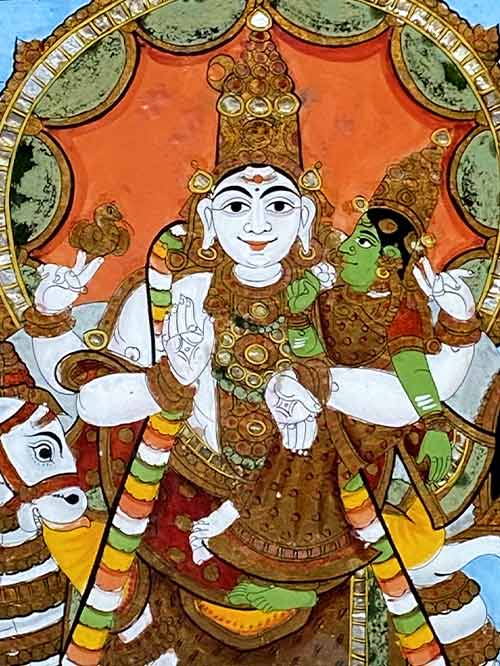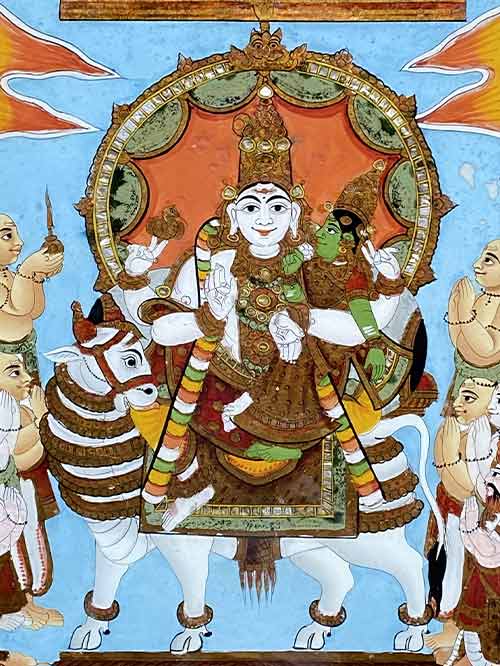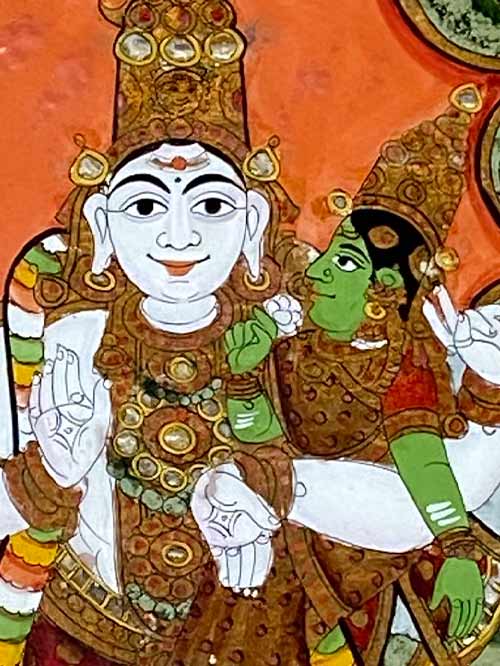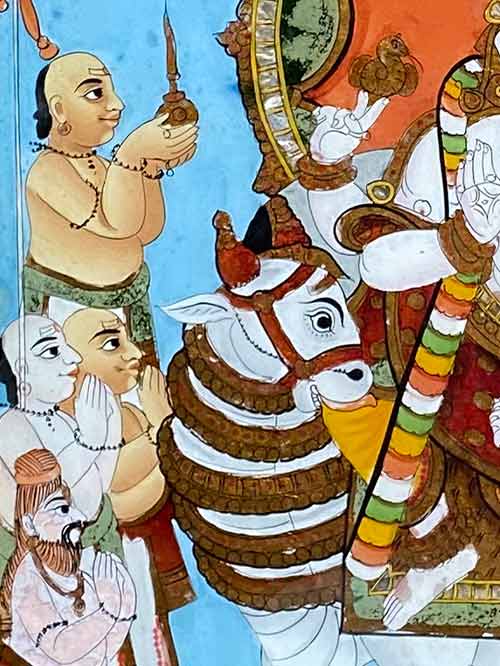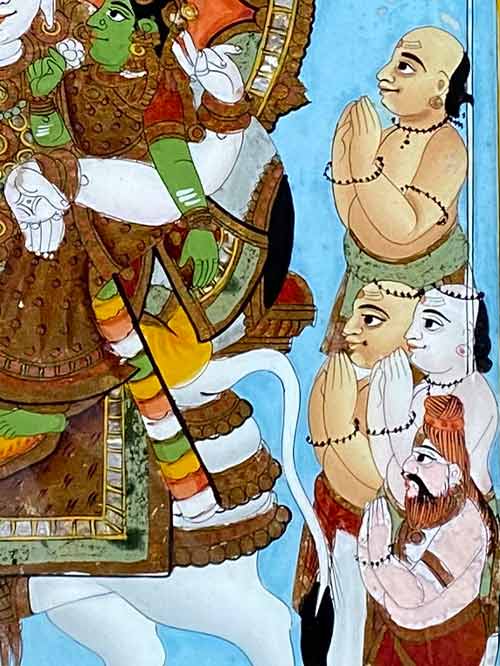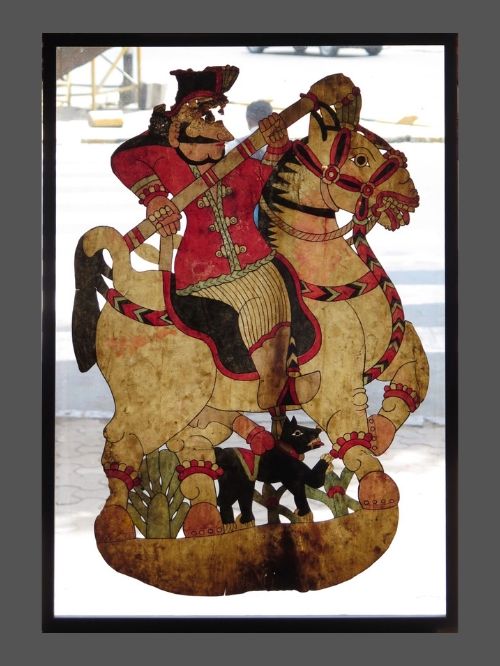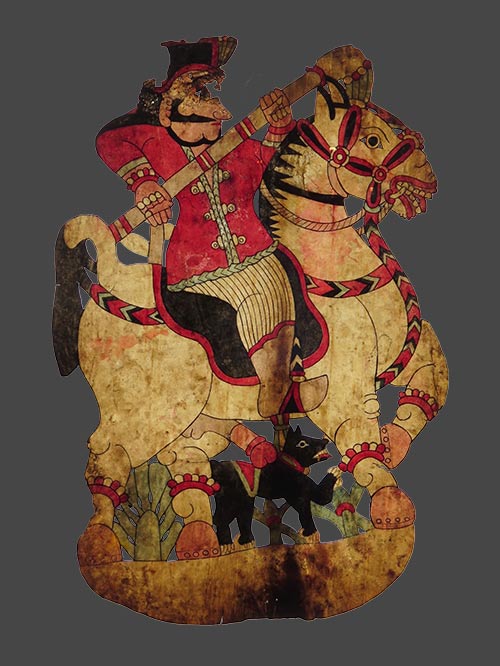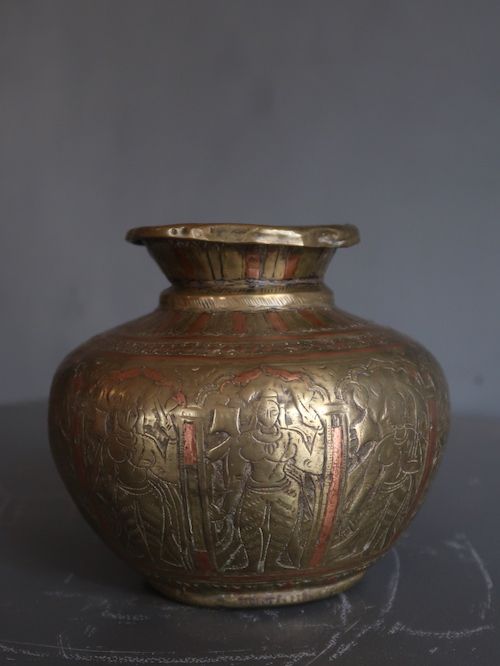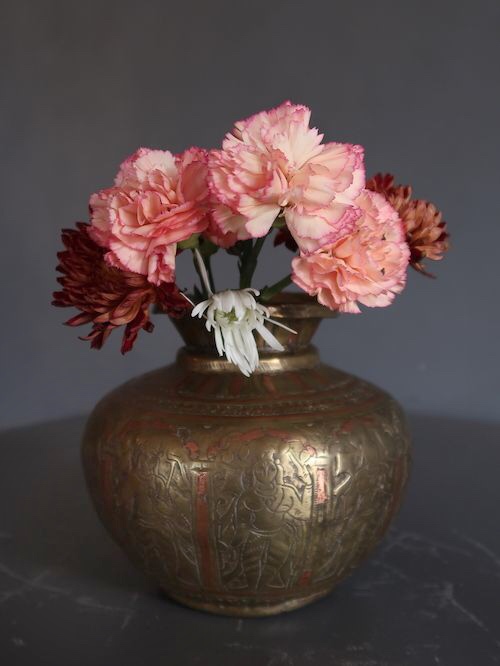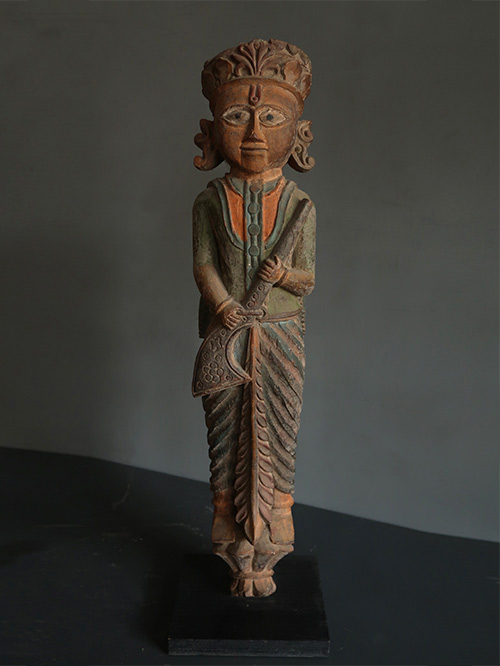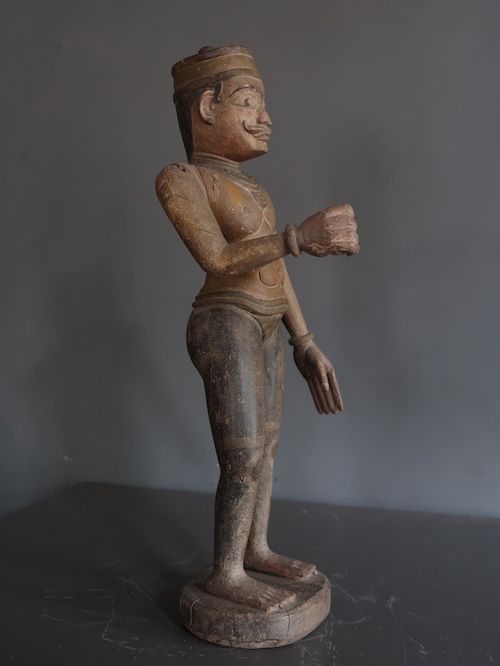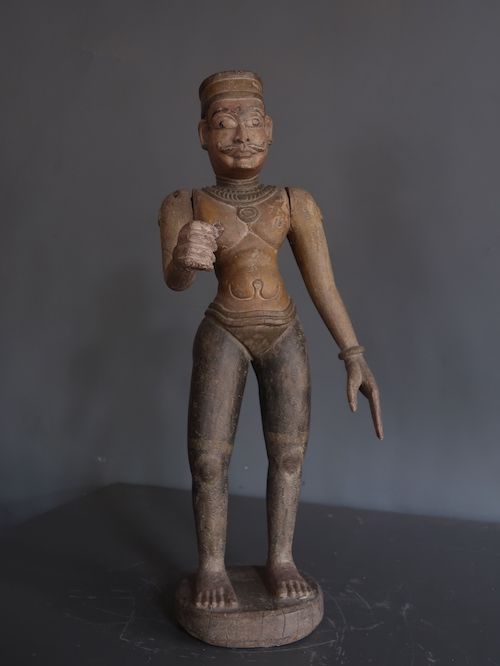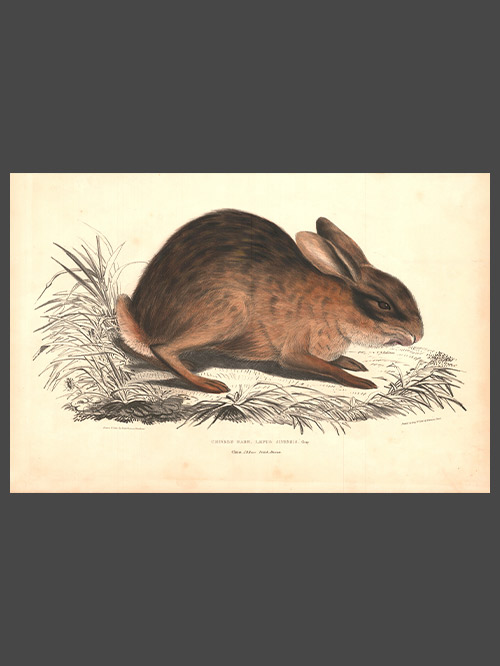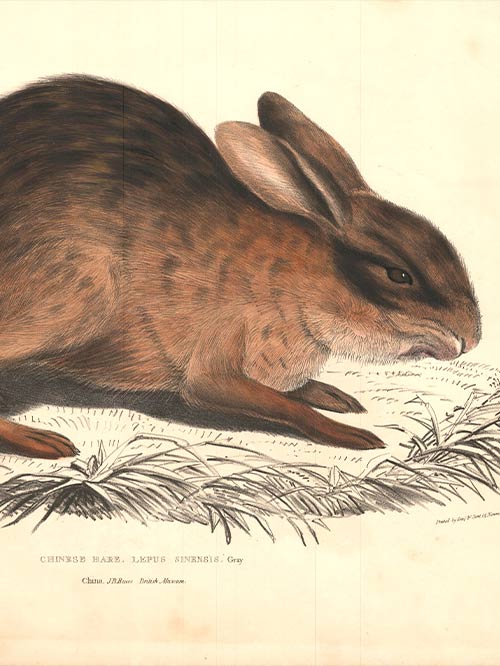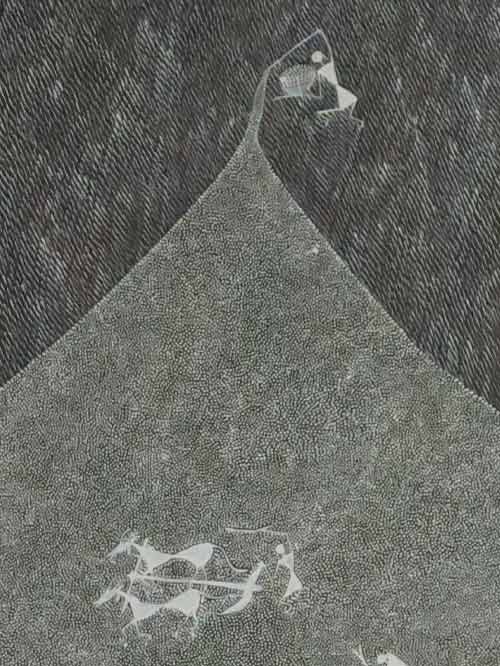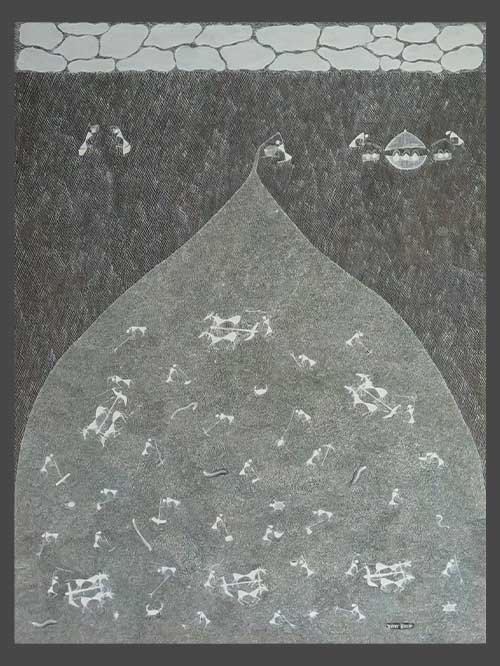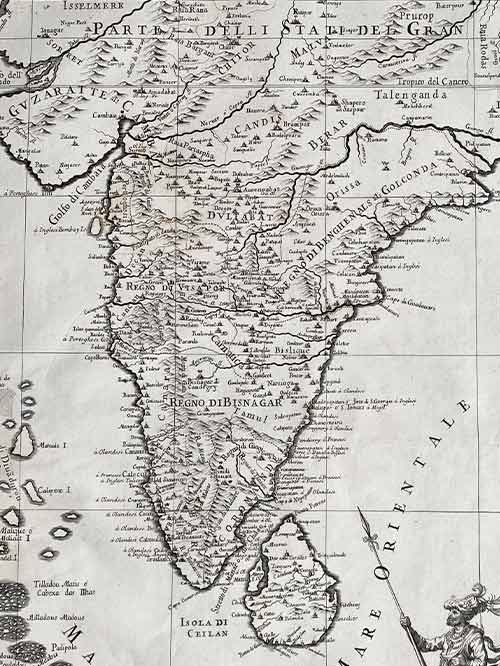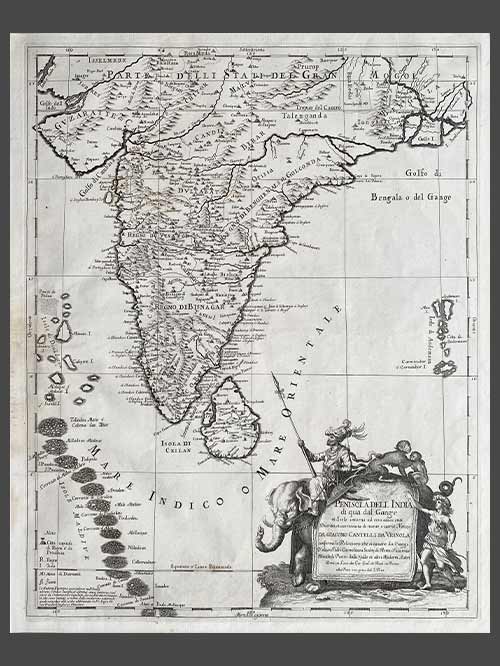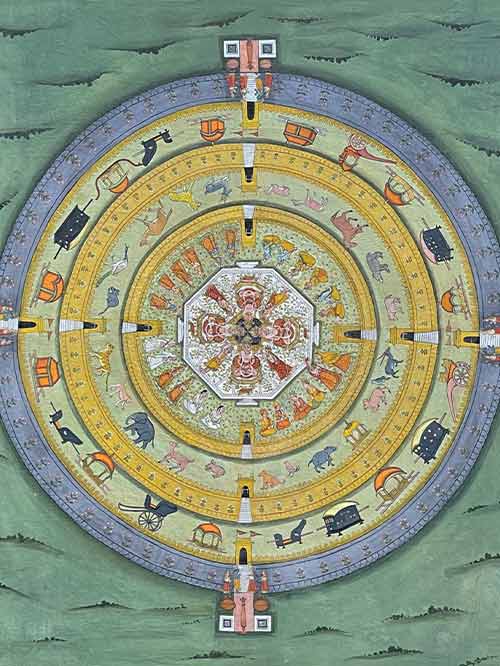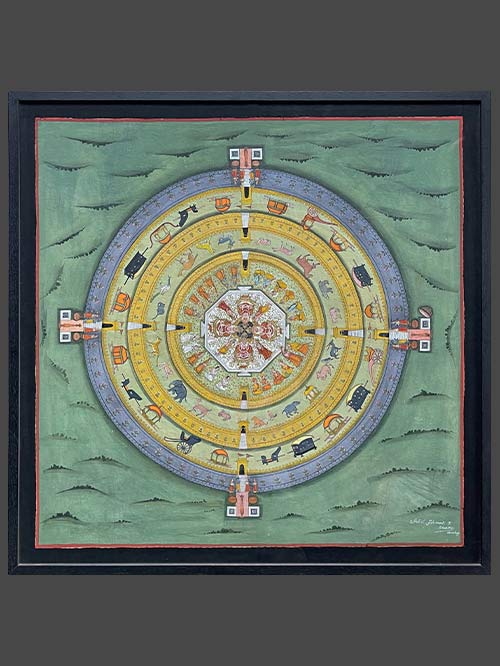Tanjore (South India)
reverse painting on glass
Shiva and Parvati ride on the elegantly caparisoned bull Nandi. Supported by a large bolster, the couple sit on a barely visible throne placed on the back of the bull. The green-complexioned goddess sits on the god’s left thigh. In his upper right hand Shiva carries the damaru, around which is coiled a snake. The lower right hand is in abhaya mudra while the lower left is in varada mudra and encircles Parvati’s waist. His headdress is adorned by a conspicuous crescent moon. Set against a light blue background, flags define the sides of the painting where six devotees pay homage to the divine couple along with the sages Patanjali on the right and Vyaghrapada on the left.
Reverse glass paintings were introduced into India the late 18th century from China by way of the China Trade. Indian artists adopted the technique of reverse glass painting partly on account of its novelty and also because it was a relatively inexpensive medium which could produce rich effects. The technique proved extremely popular and soon spread through western and southern India and even to former provincial Mughal capitals of Oudh, Murshidabad.
In Tanjore – a small state with an old art tradition- a distinctive school of glass painting developed in the early 19th century and continued for more than a hundred years. The style was essential Indian – it tended to repeat patterns of regional painting: images of deities, portraits and themes form the ancient myths, secular themes such as portraits of kings or nobles, courtesans and musicians. The colour was rich and the style bold and defiant. The subjects were clearly presented with a certain opulence and glamour.
Painting Size (cms): 60(H) x 44.5(W)
Painting Size (inches): 23.5(H) x 17.5(W)
Framed Size (cms): 64(H) x 49(W)
Framed Size (inches): 25.25(H) x 19.25(W)


